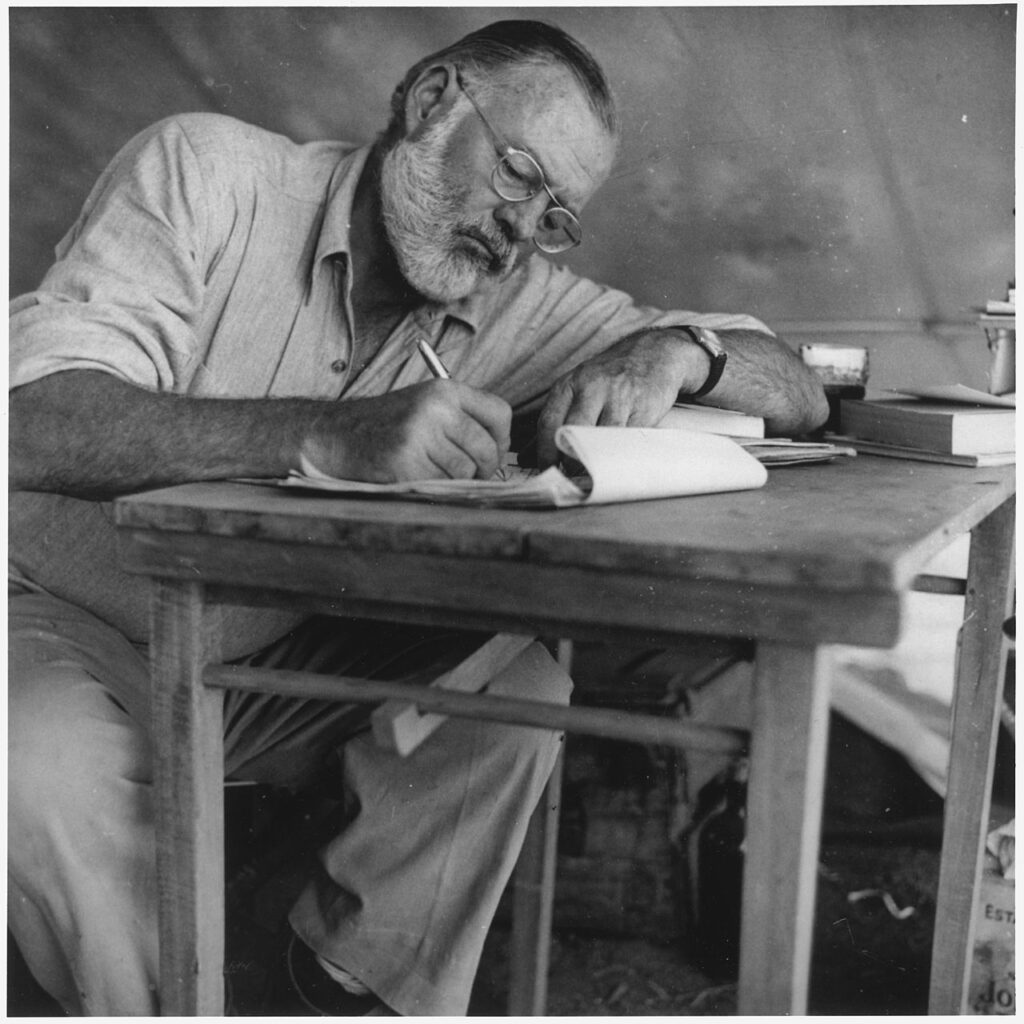
Ernest Hemingway didn’t just write about danger — he lived it. He dodged bullets on a World War I battlefield, walked away from plane crashes, and shrugged off injuries that would have killed most men.
If his novels were filled with rugged, unbreakable heroes, it was because he spent his life proving he was one himself.
From the moment he first stared death in the face as a young soldier in Italy, Hemingway became obsessed with the idea of survival. He wasn’t content to simply outlive danger — he wanted to look it in the eye and laugh.
Whether it was war, big-game hunting, deep-sea fishing, or even something as reckless as dodging a charging bull, Hemingway sought out death just to see if he could outrun it.
He ultimately met his end by his own hand in 1961, his body worn down by injury, illness, and a mind that had fought too many battles. But along the way, he survived more near-death experiences than most people could imagine.
Here are just a few times Hemingway defied the odds — and lived to tell the tale.
Shredded by an Austrian Mortar Shell
War had a way of rewriting men, and for Ernest Hemingway, it nearly ended his story before it truly began. At just 18, he volunteered as an ambulance driver for the Red Cross, eager to see the war up close. He didn’t have to wait long.
On the night of July 8, 1918, Hemingway was delivering chocolate and cigarettes to soldiers on the Italian front when an Austrian mortar shell exploded nearby. He never saw it coming. One moment, he was standing in the trenches; the next, he was ripped apart by flying shrapnel.
According to TIME, Hemingway later described the feeling as if his soul had been pulled from his body, “like you’d pull a silk handkerchief out of a pocket by one corner,” only for it to snap back into place.
By his own count, 237 pieces of shrapnel were embedded in his body. His legs were torn up, his right knee shattered so badly it had to be reinforced with aluminum, but he somehow stayed conscious.
Instead of collapsing, Hemingway did the unthinkable — he carried a wounded soldier to safety before finally losing his strength.
His bravery earned him two Italian medals, but the real reward was something far darker. The war had changed him. He had seen death up close, felt it tighten its grip, and survived anyway.
But the experience left something behind — an obsession with mortality that would haunt both his life and his writing.
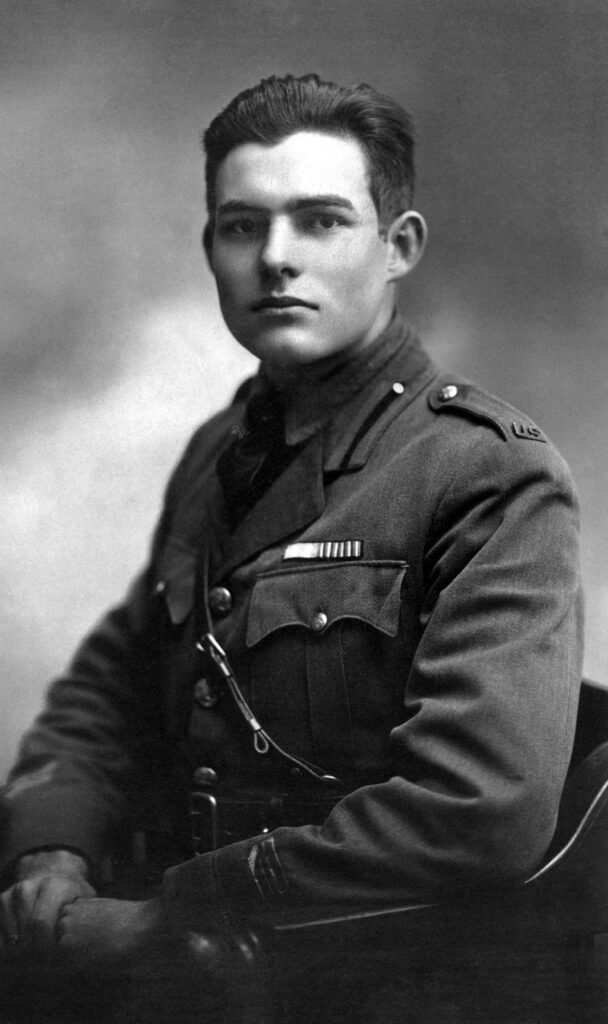
Shot While Wrangling a Shark
Most people go fishing expecting a quiet day on the water. Ernest Hemingway went fishing and ended up shooting himself.
It was 1935, and Hemingway was off the coast of Key West, locked in battle with a shark. The exact details are hazy — partly because he told the story with his usual flair, partly because the whole thing sounded absurd. What’s certain is that he had hooked a shark, and as he wrestled to bring it in, things took a turn.
According to Hemingway himself, as recounted in Esquire, he reached for his gun to finish the job. Killing a large animal required precision, he explained: shoot it in the brain up close, the heart if it’s farther, the spine if you need to drop it instantly.
Solid advice — except that in the chaos of the struggle, the gun misfired. The bullets missed the shark entirely and instead buried themselves in the backs of both his legs.
Bleeding and no doubt cursing, Hemingway had once again turned what should have been a routine event into a brush with death.
But in true Hemingway fashion, he treated it less as a disaster and more as an anecdote worth telling. He walked away, patched himself up, and added another injury to his growing collection.
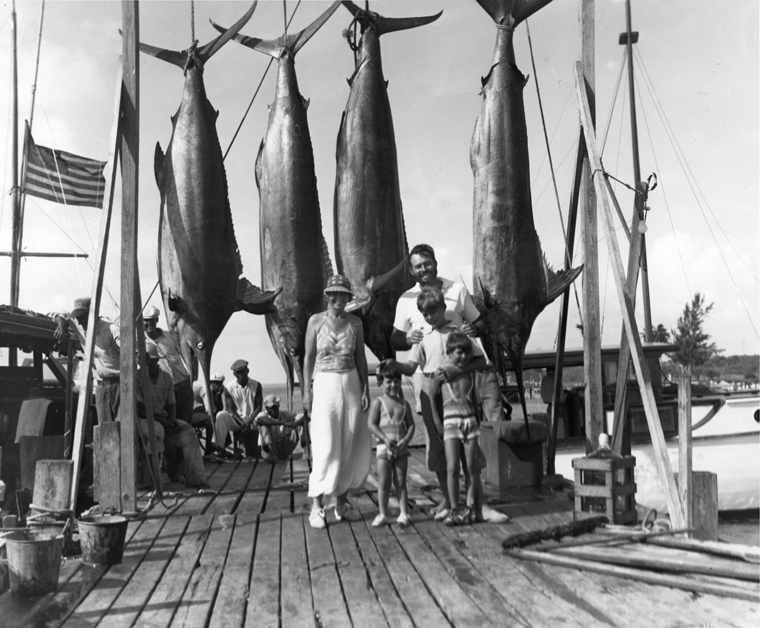
Hunting German Subs from His Fishing Boat
Most people spent World War II fearing German U-boats. Ernest Hemingway decided to hunt them — armed with grenades, a submachine gun, and an overabundance of confidence.
Between 1942 and 1943, Hemingway transformed his 38-foot wooden fishing boat, the Pilar, into a one-man war machine.
According to Terry Mort, author of The Hemingway Patrols, Hemingway patrolled the Gulf Stream with the single-minded goal of spotting and attacking enemy submarines. The logic was simple: if he saw one, he doubted the Navy could respond in time. So why not handle it himself?
His plan was exactly what you’d expect from a man who had already survived war, plane crashes, and accidental self-inflicted gunshots. As Mort put it, Hemingway’s solution was “characteristic: he would attack the U-boat — suddenly and unexpectedly — and then run for it.”
That was the whole plan. No backup, no reinforcements. Just a writer, a fishing boat, and a few weapons against a German submarine.
In the end, he never had the chance to test his strategy. No U-boats crossed his path, and the Pilar remained a fishing boat instead of a war relic. But it wasn’t for lack of trying. Hemingway had spent months scanning the waves, waiting for a fight that never came.
Of course, if history had taught him anything, it was that danger had a way of finding him — whether he went looking for it or not.
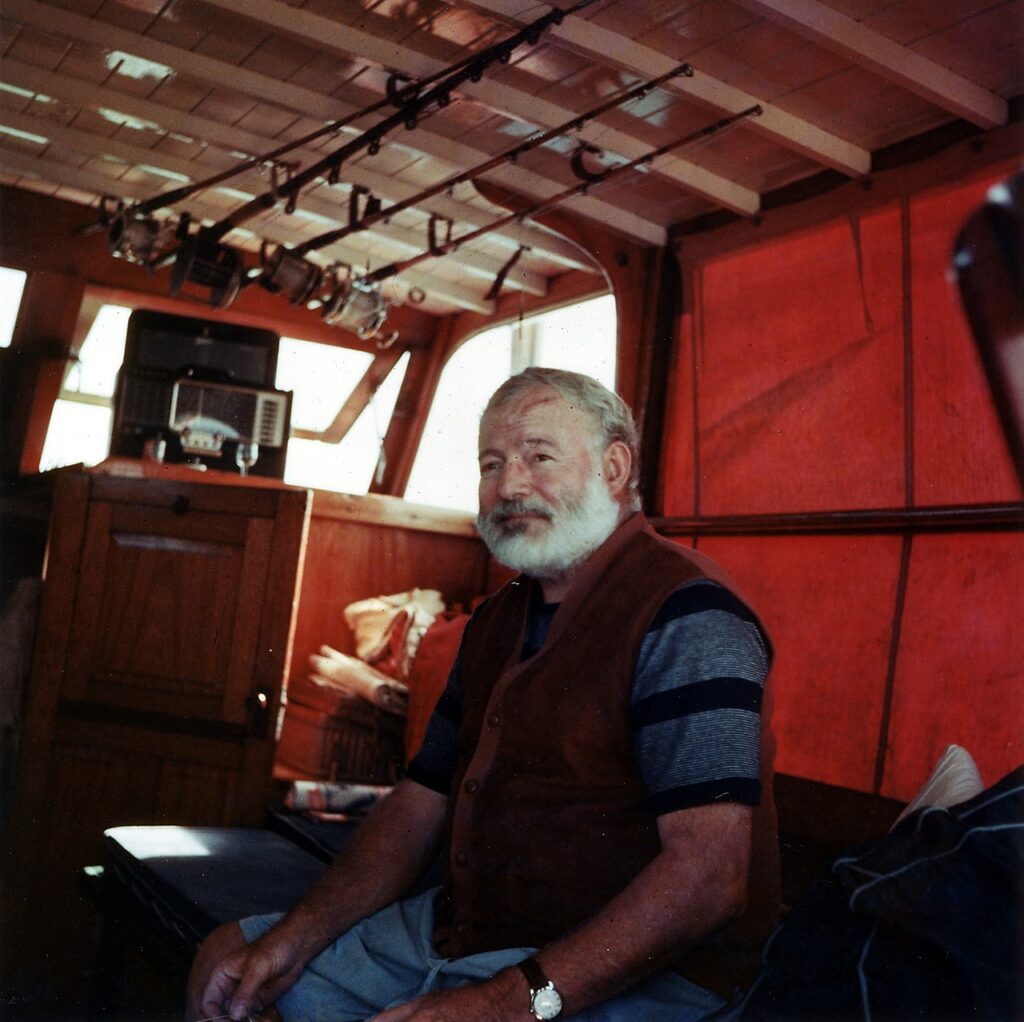
Downed in a Plane Crash — Twice
Most people survive a plane crash and count themselves lucky. Ernest Hemingway survived two in two days and called it “good luck.”
In 1954, Hemingway and his wife set off on an African safari, a trip that promised adventure even without disaster. But disaster, as always, found Hemingway first.
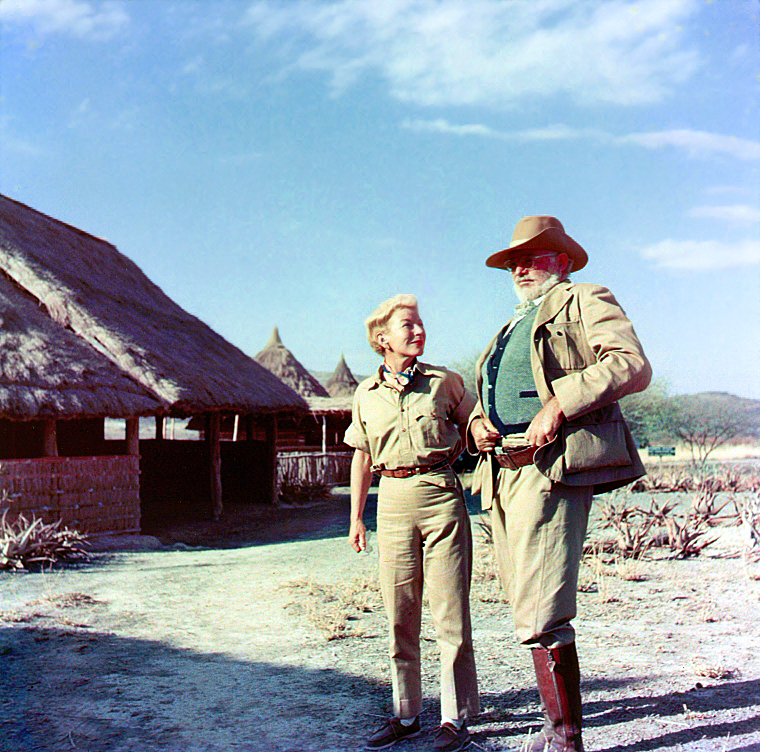
The trouble began when the small Cessna they were flying in had to make an emergency landing to avoid a flock of ibises. With seconds to decide, the pilot chose the lesser of two evils: a thick elephant track instead of a sandpit filled with basking crocodiles.
The plane went down hard, stranding Hemingway, his wife, and the pilot in the middle of the jungle, surrounded by elephants.
They spent the night in the wild before being “rescued” the next day. Rescued, in this case, meant boarding another small plane — one that immediately crashed again, this time bursting into flames.
Newspapers around the world began printing obituaries.
But Hemingway was not dead. He emerged from the wreckage bloodied and burned but very much alive.
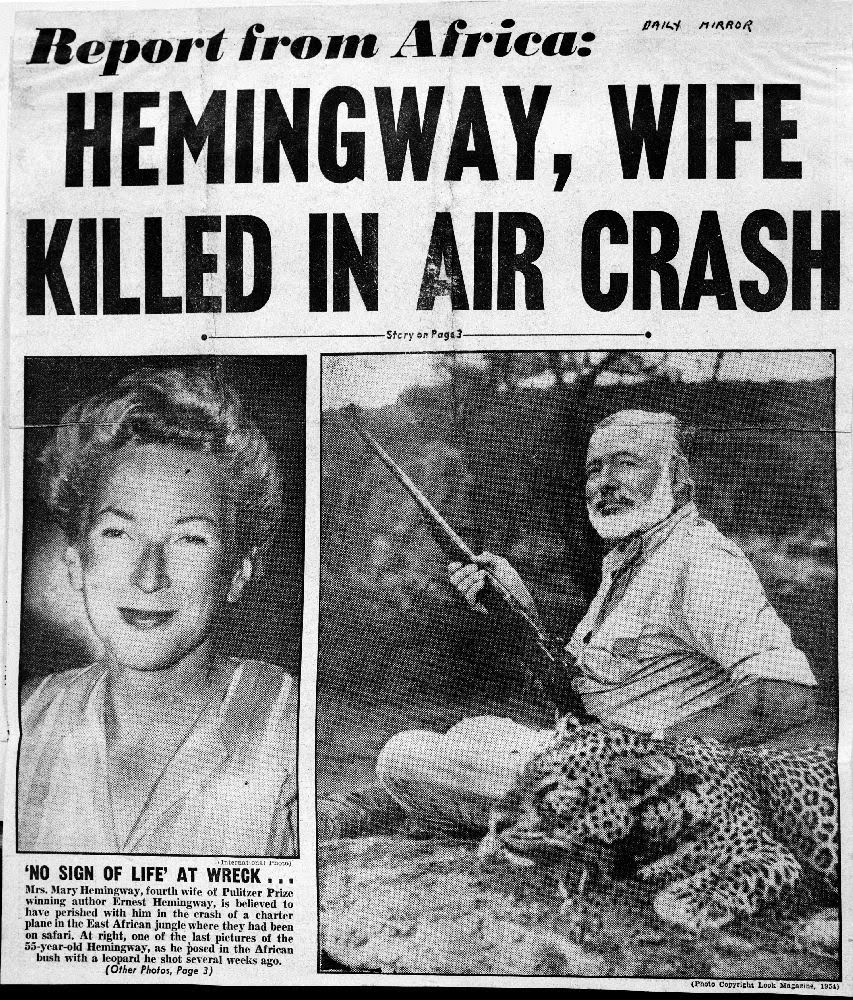
According to TIME, he eventually walked out of the jungle, unfazed, with a bottle of gin in one hand and a bunch of bananas in the other. Ever the storyteller, he reportedly quipped, “My luck, she is running very good.”
By this point, it was hard to argue with him. He had been blown up, shot, shipwrecked, and burned. And somehow, Hemingway still wasn’t done tempting fate.





